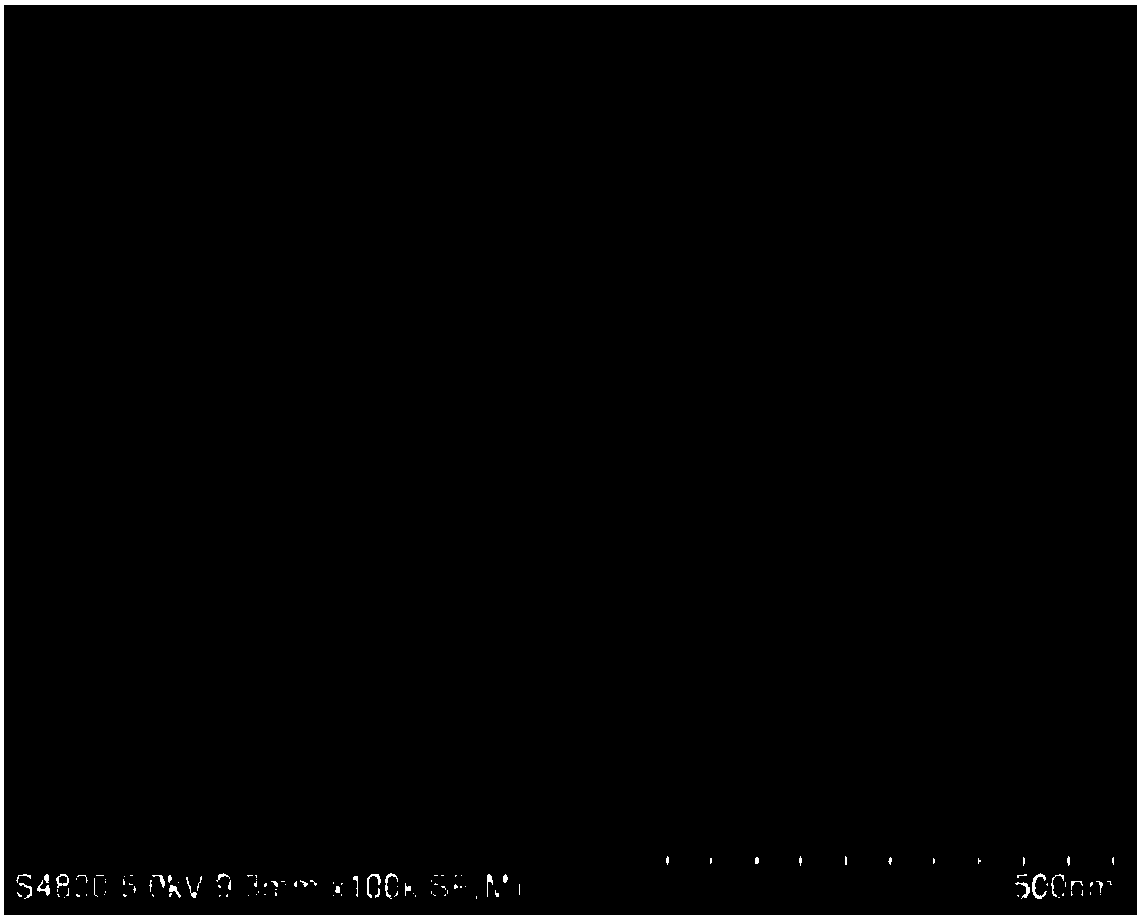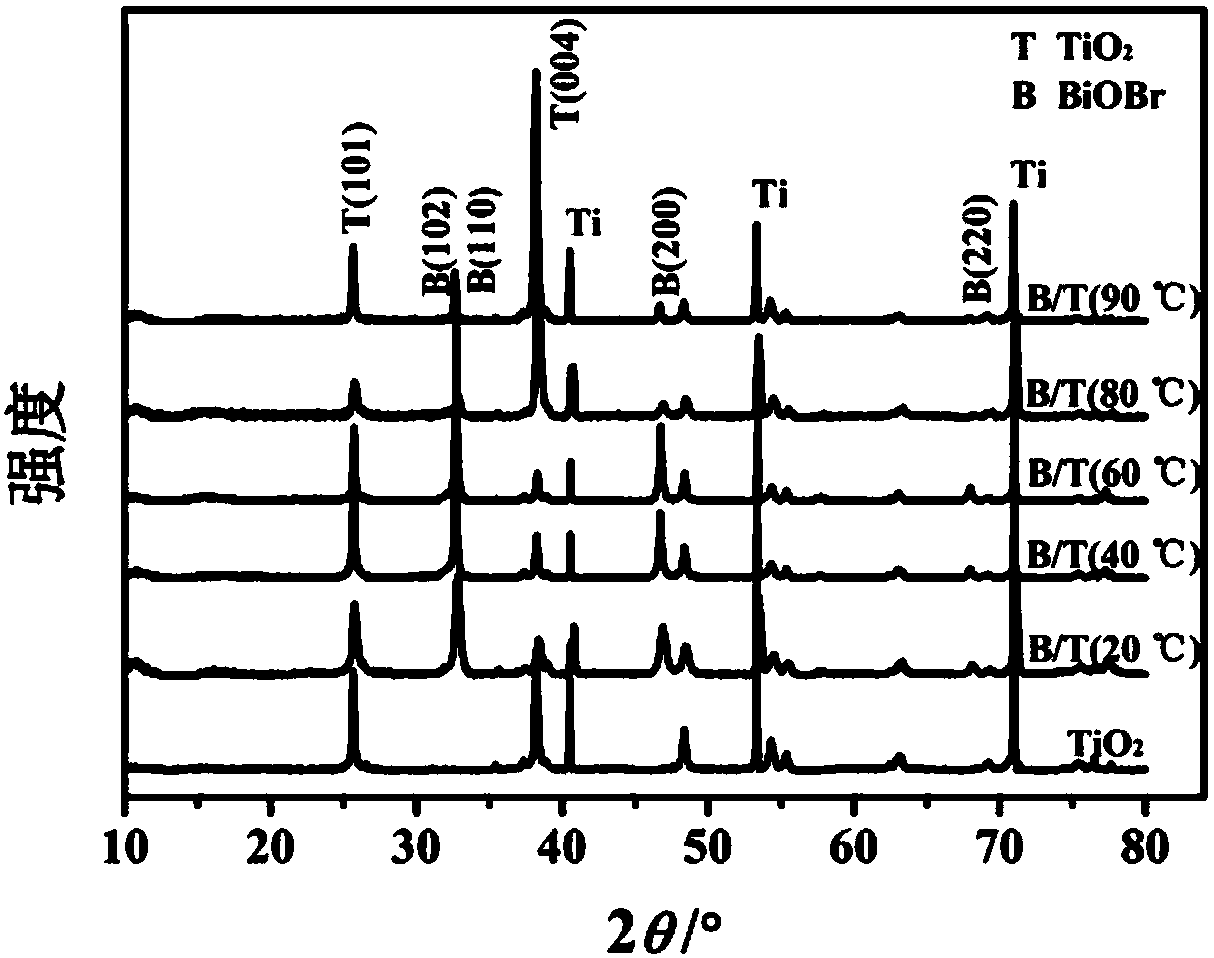Preparation method and applications of bismuth oxybromide compounded titanium dioxide nano-tube heterojunction material
A technology of titanium dioxide and nanotubes, applied in the field of photocatalysis, can solve the problems of limited application and inability to absorb visible light, and achieve the effects of reducing recombination, promoting rapid transfer, and easy recycling
- Summary
- Abstract
- Description
- Claims
- Application Information
AI Technical Summary
Problems solved by technology
Method used
Image
Examples
Embodiment Construction
[0037] The present invention will be further described in detail below in conjunction with the accompanying drawings and specific embodiments. It should be noted that: the following examples are illustrative, not restrictive, and the protection scope of the present invention cannot be limited by the following examples. The raw materials required in the following examples and comparative examples are all commercially available, and used Virahol, ethanol, ethylene glycol, ammonium fluoride, Bi(NO 3 ) 3· Both 5H2O and KBr are aqueous solutions. The X-ray diffractometer is a D8-Focus X-ray diffractometer from Bruker AXS Co., Ltd., Germany; the scanning electron microscope is a S-4800 field emission scanning electron microscope from Hitachi, Japan; the electrochemical workstation is a CHI660E electrochemical workstation from Shanghai Chenhua Instrument Co., Ltd. Workstation; the UV-visible spectrophotometer is the T6 UV-visible spectrophotometer of Beijing Puxi General Instrument...
PUM
| Property | Measurement | Unit |
|---|---|---|
| Diameter | aaaaa | aaaaa |
| Tube chief | aaaaa | aaaaa |
| Tube wall thickness | aaaaa | aaaaa |
Abstract
Description
Claims
Application Information
 Login to View More
Login to View More - R&D
- Intellectual Property
- Life Sciences
- Materials
- Tech Scout
- Unparalleled Data Quality
- Higher Quality Content
- 60% Fewer Hallucinations
Browse by: Latest US Patents, China's latest patents, Technical Efficacy Thesaurus, Application Domain, Technology Topic, Popular Technical Reports.
© 2025 PatSnap. All rights reserved.Legal|Privacy policy|Modern Slavery Act Transparency Statement|Sitemap|About US| Contact US: help@patsnap.com



